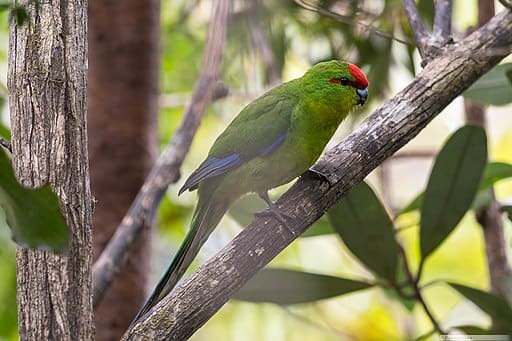The New Caledonian Parakeet (Cyanoramphus saisseti) is threatened by mining and predation by invasive species.
In 2002, the WPT helped to fund a long-term study to map the distribution and abundance of the New Caledonian Parakeet. Studies and surveys continued, along with the installation of cameras at nest sites to monitor breeding. Radio-tracking of individuals is currently being utilised to determine breeding success and survival. A study to estimate the species’ range and population size was completed.
Status: IUCN Near Threatened (as conspecific of C. novaezelandiae) / CITES Appendix I
Population: Unknown, decreasing.
Threats: This parrot is suspected to be declining due to predation by invasive species. In the near future, it may decline more rapidly if habitat is lost to nickel mining.
Range: New Caledonia, Melanesia.
Natural history: The New Caledonian Parakeet is found in indigenous montane forests, where it feeds on fruits and seeds of casuarinas and pawpaws, Carica papaya, and other plants. This species has a scattered range, mostly in rainforest and forest edges. There are also reports that it tolerates Niaouli savanna, Maquis scrub and humid forest to 1,500 m. It is most abundant in Gymnostoma forest and wet forests from 400-800m. Birds are quiet and difficult to observe in the canopy; will forage for seeds on the ground.

